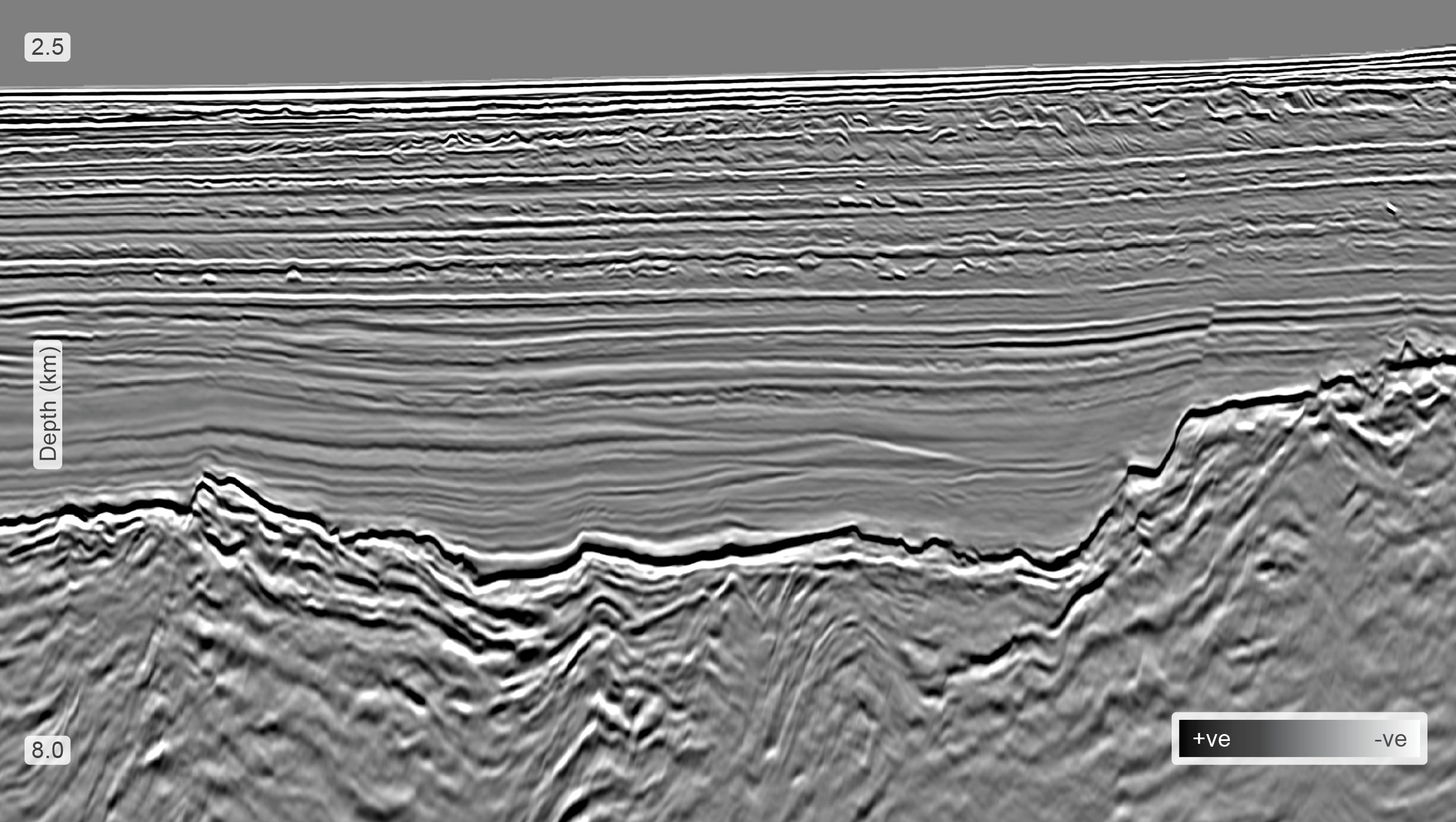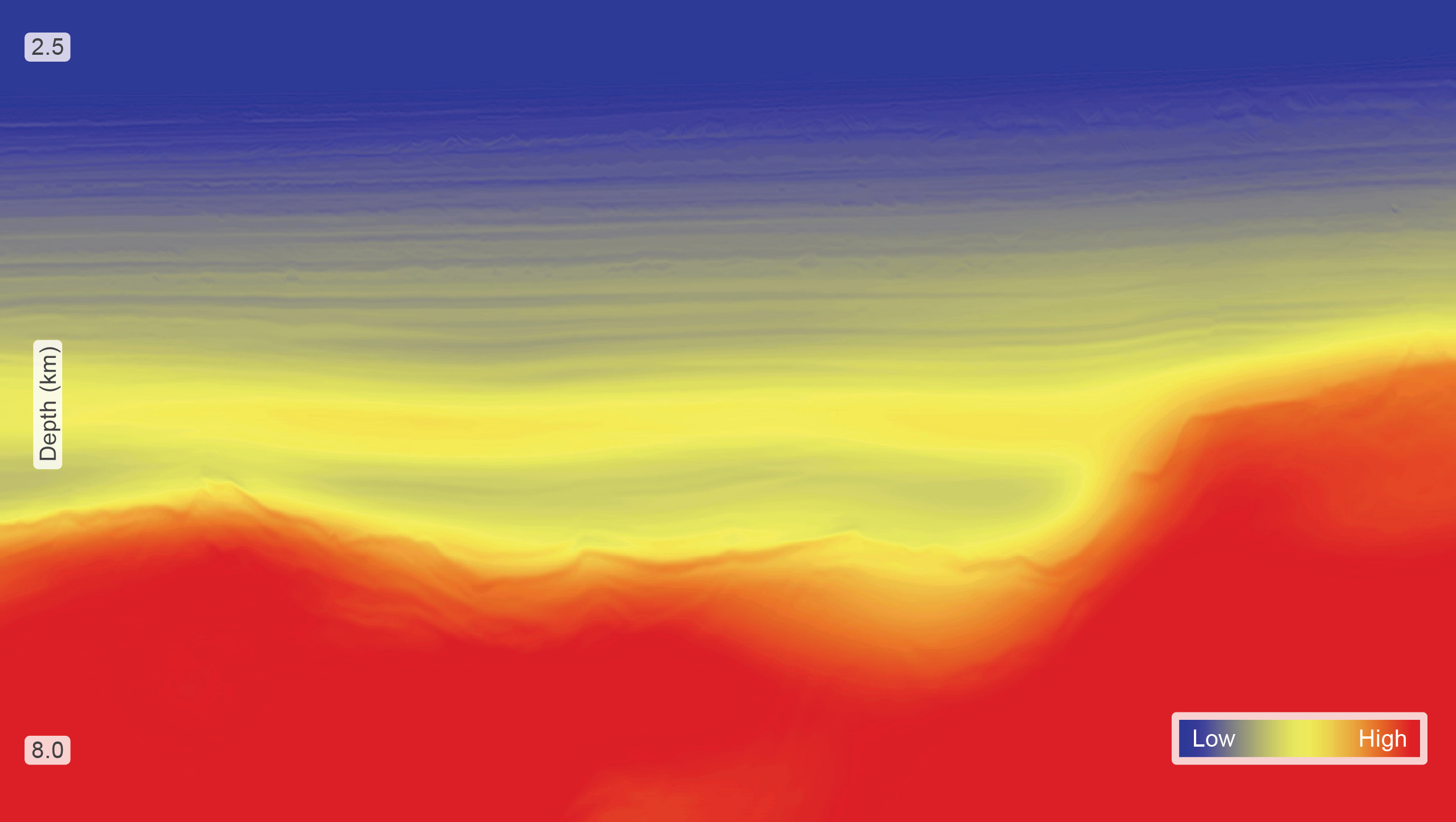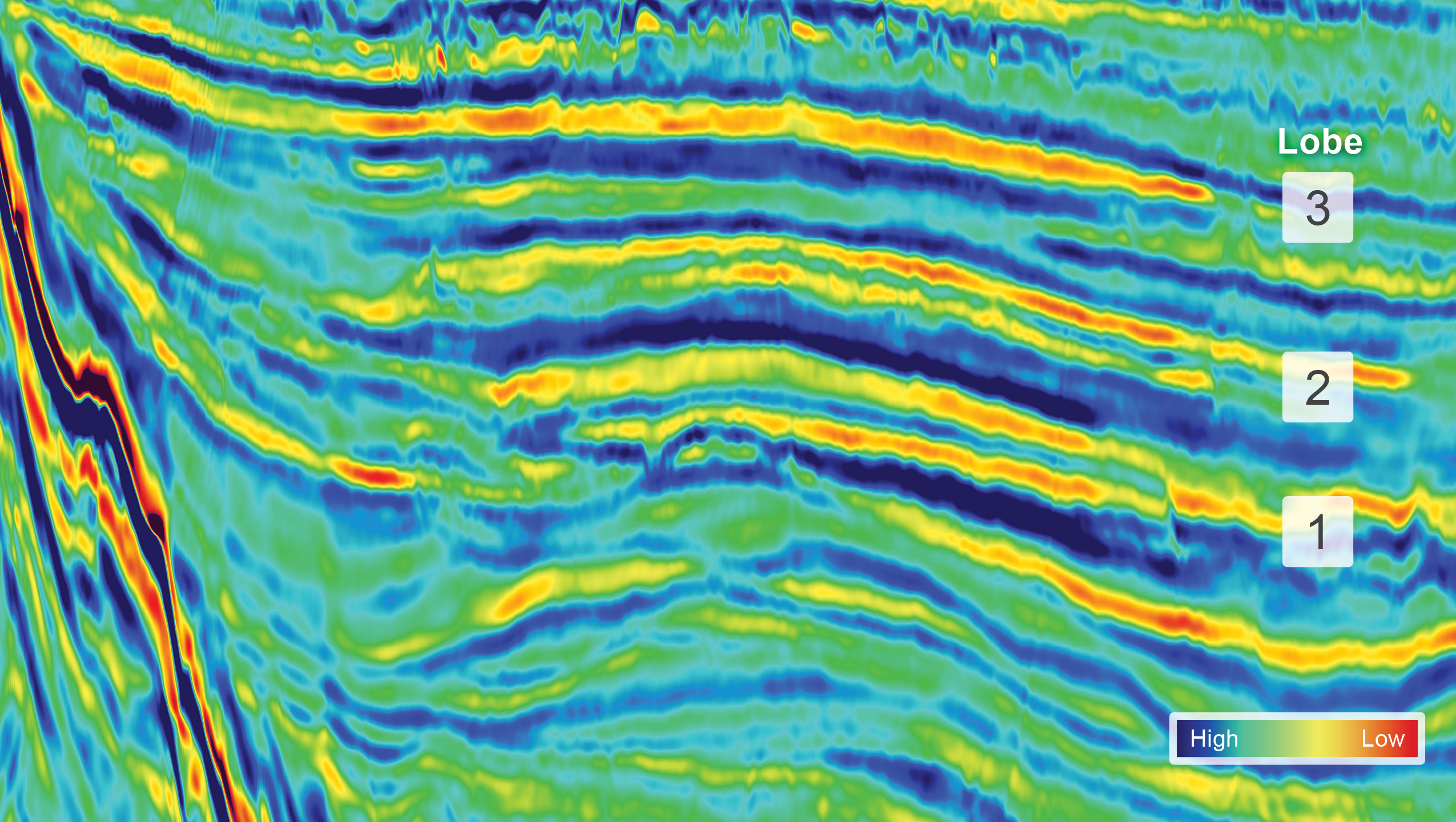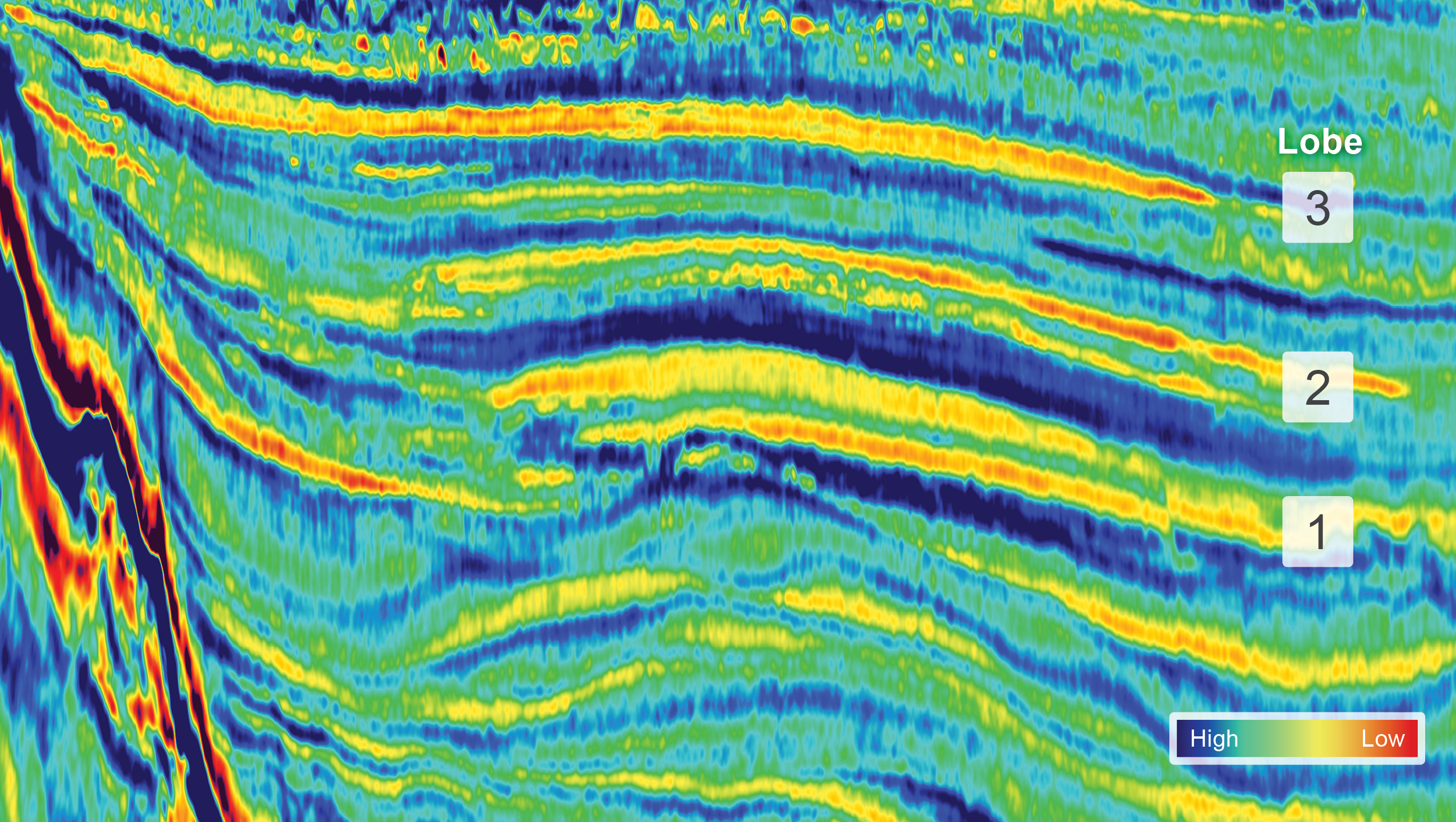PGS, in partnership with TGS have been acquiring modern 3D GeoStreamer data offshore Canada since 2015. The South Bank 3D survey was acquired in 2020 over an area of 2 635 sq. km using multisensor towed streamer technology with 16 streamers (8 km in length) in the Province of Newfoundland and Labrador. The survey is located across the eastern slope of Grand Banks in the Salar Basin and enables further investigation of the petroleum system elements which legacy 2D data had already indicated were present and suggested there is a significant exploration potential in the area. A promising new play concept was identified in the Upper Cretaceous to Paleogene slope settings.
The new 3D data was acquired over an extensive clastic fan system and proved that sand reservoirs are present at large scale throughout the Upper Cretaceous to Paleogene sequence.
Joint PGS/TGS MultiClient data library. The study area is located in the Salar Basin. The South Bank 3D survey is shown in orange.
Estimating Reliable Earth Properties using PGS Ultima
Seismic attributes are widely used in hydrocarbon exploration and play a key role in prospect identification. Prestack seismic inversion has typically been the solution to derive earth properties, particularly velocity ratio and reflectivity derivatives which are then used to calculate various attributes. Traditionally, a sequential workflow using Full Waveform Inversion (FWI) followed by Least-Squares Reverse Time Migration (LS-RTM) has been employed to invert for subsurface velocity and reflectivity models. Recently, PGS introduced a new seismic inversion scheme that combines both inversions into a single process, PGS Ultima. A key aspect of the novel approach is the separation of the low- and high-wavenumber components of the earth model, enabling the simultaneous update of the velocity and reflectivity with minimum crosstalk. The approach is equivalent to performing FWI and LS-RTM simultaneously, where both velocity and reflectivity are continuously updated at each iteration.
The iterative inversion compensates for incomplete acquisitions and varying illumination in the subsurface to provide true-amplitude earth reflectivity.
This 3D display shows a geo-body extraction from the upper marine fan (lobe 3) and its corresponding PGS Ultima relative density response. A pre-existing volcanic ridge controls the sediment input and deposition in this area. The source rock is expected to be present in the deeper part (late Cretaceous section). The fan lobe itself is well developed. PGS Ultima elastic properties (relative impedance and density) help to assess its internal heterogeneity and estimate exploration risk. In this example, low relative density may signal good reservoir quality and possible hydrocarbon presence.
Extracting Reliable Earth Properties
Using a wave equation parameterized in terms of velocity and reflectivity removes the need for a density assumption in the PGS Ultima multi-parameter inversion process. Velocity and reflectivity outputs from the inversion can in fact be used to extract additional properties, such as relative impedance and relative density, for prospectivity assessment in a reliable and data-driven approach.
Inversion for Prestack Reflectivity
The simultaneous inversion workflow has recently been extended to the prestack angle gather domain, which is crucial for improving our understanding of subsurface elastic properties. A key aspect of this approach is the extraction of angle information using elements obtained from the solution of the reflectivity-based wave equation. The inverted velocity and reflectivity models along with the derived relative impedance and density, and inverted pre-stack angle gathers, provide reliable information for subsequent amplitude versus angle (AVA) analysis and quantitative interpretation (QI).
Application in a Frontier Exploration Area
PGS’ South Bank 3D seismic survey is located in the Salar Basin, which is an early Cretaceous, isolated rift basin with passive margin fill from late Cretaceous period and onward. Many fan systems have been identified along the margin using existing seismic data. They are interpreted as Oligocene in age, and the main prospectivity is believed to lie in these fans originating from the shelf and shelf-edge deltas. Class II and Ip anomalies are observed in the reservoir interval, along with class IV responses in the deeper section analogous to a modeled source rock in the region.
The slider image below shows the PGS Ultima velocity model and stacked reflectivity from angle gather output from the simultaneous inversion. The resolution in the velocity model allows accurate spatial positioning of seismic events, while the reflectivity output aids improved stratigraphic and quantitative interpretation.
The comparison images below represent estimation of relative Vp/Vs ratio over a key prospect that has three vertically stacked levels. The difference between the images is that the section on the left was produced in a conventional flow using the final and fully processed Kirchhoff migration data, whereas the right section is using PGS Ultima angle-dependent reflectivity. Note that the input to PGS Ultima was limited spatially yet, the PGS Ultima Vp/Vs response has an improved signal-to-noise ratio, and good resolution of the top and base of the layers compared to the Kirchhoff migration output.
A Reliable Solution
The simultaneous inversion products, i.e., velocity, angle dependent reflectivity, and the derived relative impedance and density, improve individual lead evaluation and provide better property constraints for QI analysis and anomaly interpretation. The high-resolution velocity model constrains lithologic relationships in the subsurface resulting in higher confidence quantitative analysis. PGS Ultima assists in derisking potential prospectivity in frontier areas of Canada’s petroleum basins.
Contact a PGS expert
Please contact a member of our Canada team for more information.



